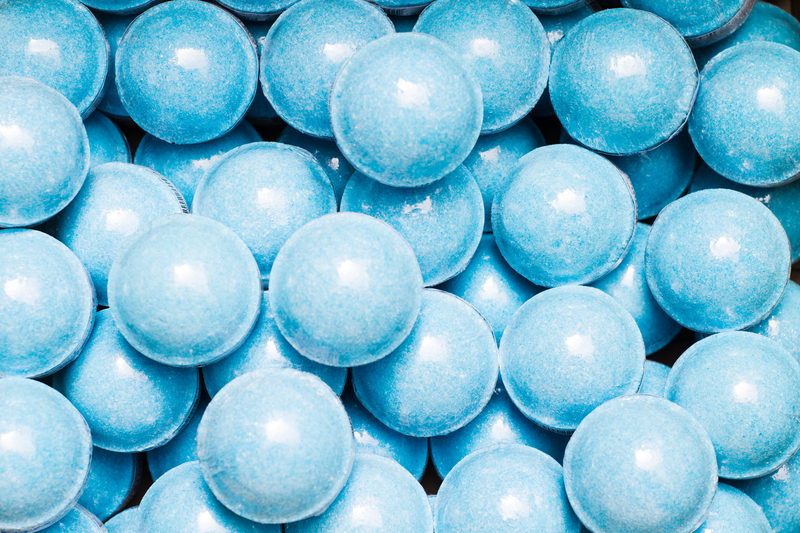Sustainable flooring options for the future home
Posted on 28/07/2024
are becoming increasingly popular as people become more environmentally conscious. With the rise in climate change and the depletion of natural resources, it is crucial that we consider sustainable materials for our homes. Flooring is an essential element of any home and has a significant impact on its overall sustainability. In this article, we will explore some of the best sustainable flooring options for the future home.
Sustainable flooring refers to materials that are sourced, produced, and disposed of in an environmentally friendly way. It takes into account the entire lifecycle of the product and aims to minimize its carbon footprint. Sustainable flooring options are not only better for the planet but also better for our health.
Bamboo is a popular choice for sustainable flooring as it is a rapidly renewable resource. Unlike traditional hardwood trees that take decades to grow, bamboo can be harvested every five years without causing any harm to the plant. This makes it an excellent alternative to hardwood flooring, which contributes to deforestation.
Bamboo flooring is also durable and easy to maintain, making it perfect for high-traffic areas in the home. It comes in a variety of colors and styles, giving homeowners many design options. However, it should be noted that not all bamboo flooring is eco-friendly. Look for products that are certified by organizations like the Forest Stewardship Council (FSC) or FloorScore to ensure they meet sustainability standards.
Cork is another sustainable flooring option that is gaining popularity due to its unique look and eco-friendliness. Cork is made from the bark of cork oak trees, which can be harvested without harming the tree. It is also biodegradable and recyclable, making it a highly sustainable material.
In addition to being environmentally friendly, cork flooring has many other benefits. It is water-resistant, anti-microbial, and provides excellent insulation, making it a perfect choice for any room in the house. It is also soft underfoot, making it comfortable to walk on, and has excellent acoustic properties, reducing noise levels in the home.
Using recycled or reclaimed materials for flooring is another sustainable option for future homes. These materials include reclaimed hardwood, recycled glass tiles, and even repurposed wine corks. By using these materials, we are not only reducing waste but also giving new life to old products.
One of the most significant benefits of using recycled/reclaimed flooring is its unique look. Each piece carries its own history and adds character to the home. It also requires less energy and resources to produce, making it a more sustainable choice.
When selecting sustainable flooring for your future home, there are a few things to keep in mind. Look for products that are certified by reputable organizations like FSC or FloorScore. These certifications ensure that the materials used are environmentally friendly and meet sustainability standards.
Another tip is to choose durable materials that will last longer, reducing the need for frequent replacements. This will not only save you money in the long run but also reduce waste and carbon footprint.
Lastly, consider the production process of the flooring material. Opt for options that require less energy and resources to make and have a lower impact on the environment.
Pros:
- Environmentally friendly
- Better for human health
- Durable and long-lasting
- Variety of design options
- Can add value to your home
Cons:
- Generally more expensive upfront cost
- Limited availability in some areas
- Some options may require special care
Sustainable flooring options offer numerous benefits for both the planet and homeowners. They are environmentally friendly, healthier for our homes, and can add value to our property. Bamboo, cork, and reclaimed/recycled materials are excellent choices for future homes, but it is important to do research and ensure they meet sustainability standards.
The demand for sustainable flooring options is on the rise as people become more conscious of their impact on the environment. Bamboo, cork, and recycled/reclaimed materials are just a few of the many sustainable options available. By choosing sustainable flooring for our future homes, we can make a positive impact on the planet while creating a beautiful and healthy living space. Remember to do your research and choose certified products to ensure maximum sustainability.
What is Sustainable Flooring?
Sustainable flooring refers to materials that are sourced, produced, and disposed of in an environmentally friendly way. It takes into account the entire lifecycle of the product and aims to minimize its carbon footprint. Sustainable flooring options are not only better for the planet but also better for our health.

Bamboo Flooring
Bamboo is a popular choice for sustainable flooring as it is a rapidly renewable resource. Unlike traditional hardwood trees that take decades to grow, bamboo can be harvested every five years without causing any harm to the plant. This makes it an excellent alternative to hardwood flooring, which contributes to deforestation.
Bamboo flooring is also durable and easy to maintain, making it perfect for high-traffic areas in the home. It comes in a variety of colors and styles, giving homeowners many design options. However, it should be noted that not all bamboo flooring is eco-friendly. Look for products that are certified by organizations like the Forest Stewardship Council (FSC) or FloorScore to ensure they meet sustainability standards.
Cork Flooring
Cork is another sustainable flooring option that is gaining popularity due to its unique look and eco-friendliness. Cork is made from the bark of cork oak trees, which can be harvested without harming the tree. It is also biodegradable and recyclable, making it a highly sustainable material.
In addition to being environmentally friendly, cork flooring has many other benefits. It is water-resistant, anti-microbial, and provides excellent insulation, making it a perfect choice for any room in the house. It is also soft underfoot, making it comfortable to walk on, and has excellent acoustic properties, reducing noise levels in the home.
Recycled/Reclaimed Flooring
Using recycled or reclaimed materials for flooring is another sustainable option for future homes. These materials include reclaimed hardwood, recycled glass tiles, and even repurposed wine corks. By using these materials, we are not only reducing waste but also giving new life to old products.
One of the most significant benefits of using recycled/reclaimed flooring is its unique look. Each piece carries its own history and adds character to the home. It also requires less energy and resources to produce, making it a more sustainable choice.
Tips for Choosing Sustainable Flooring
When selecting sustainable flooring for your future home, there are a few things to keep in mind. Look for products that are certified by reputable organizations like FSC or FloorScore. These certifications ensure that the materials used are environmentally friendly and meet sustainability standards.
Another tip is to choose durable materials that will last longer, reducing the need for frequent replacements. This will not only save you money in the long run but also reduce waste and carbon footprint.
Lastly, consider the production process of the flooring material. Opt for options that require less energy and resources to make and have a lower impact on the environment.
The Pros and Cons of Sustainable Flooring
Pros:
- Environmentally friendly
- Better for human health
- Durable and long-lasting
- Variety of design options
- Can add value to your home
Cons:
- Generally more expensive upfront cost
- Limited availability in some areas
- Some options may require special care

Takeaways
Sustainable flooring options offer numerous benefits for both the planet and homeowners. They are environmentally friendly, healthier for our homes, and can add value to our property. Bamboo, cork, and reclaimed/recycled materials are excellent choices for future homes, but it is important to do research and ensure they meet sustainability standards.
Conclusion
The demand for sustainable flooring options is on the rise as people become more conscious of their impact on the environment. Bamboo, cork, and recycled/reclaimed materials are just a few of the many sustainable options available. By choosing sustainable flooring for our future homes, we can make a positive impact on the planet while creating a beautiful and healthy living space. Remember to do your research and choose certified products to ensure maximum sustainability.





